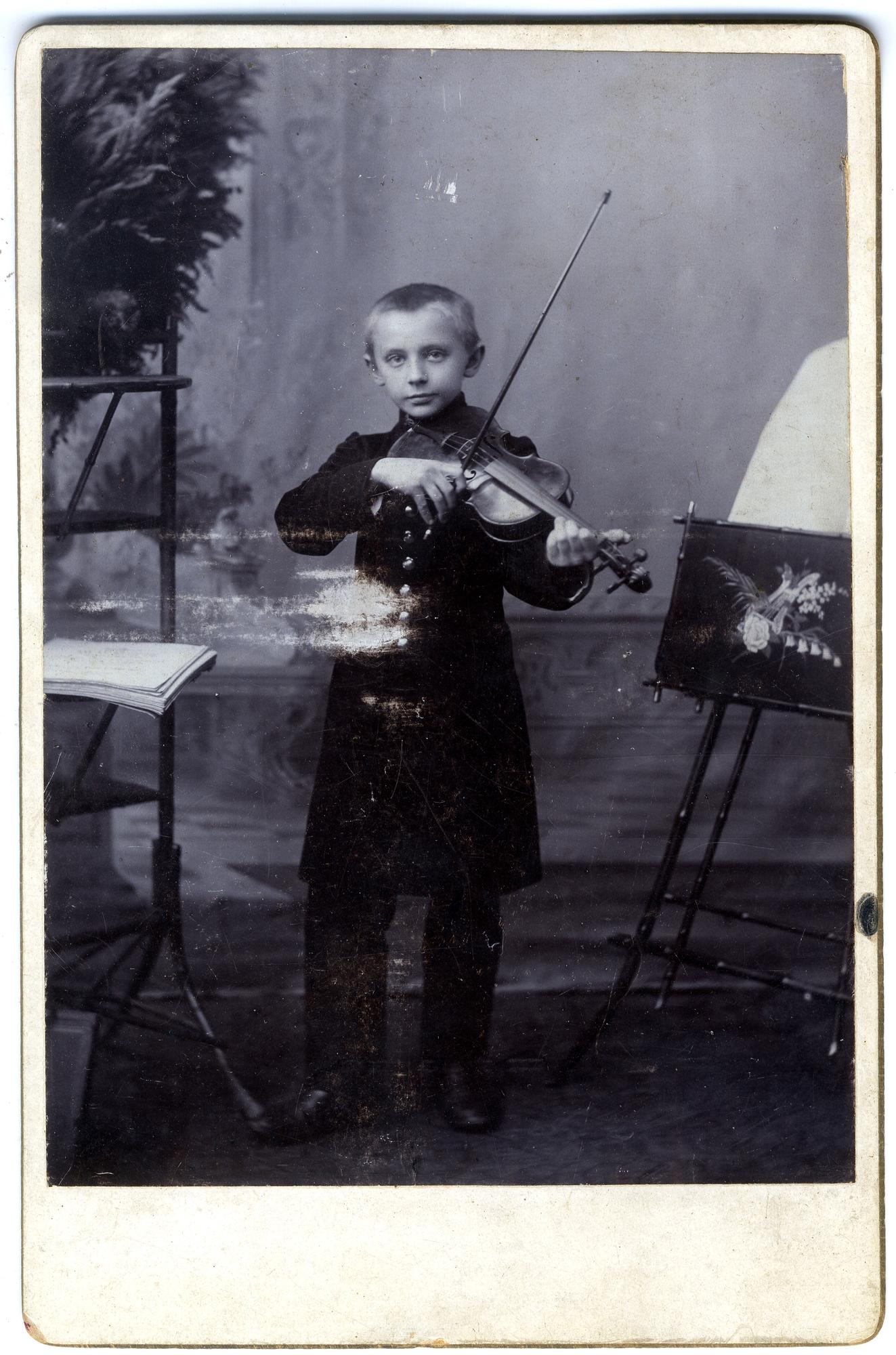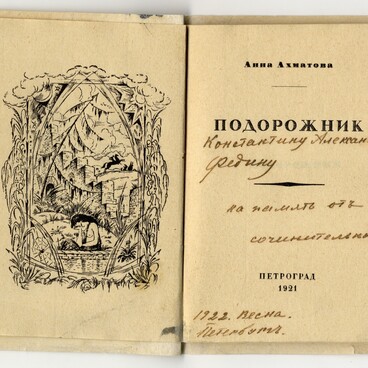Konstantin Fedin’s novel Brothers was finished in 1928 in Saratov. It was the author’s second major work. Fedin, who was visiting his sister at the time, wrote to Maxim Gorky on 8 March: ‘Dear Alexei Maximovich, today I finished my Brothers and you are the first person with whom I am sharing the good news.’ It was only fitting for the novel to be completed in Fedin’s hometown. Not only do its pages contain detailed descriptions of a number of Saratov streets and buildings, but they also recount several experiences from the author’s own childhood and teenage years. Among such episodes are the 1905 brutal pogroms of the Black Hundred and the two occasions on which the young Konstantin, then a schoolboy, ran away from his father’s house in Smursky Alley.
The novel’s main character, musician and composer Nikita Karev, shares many autobiographical details with the author, such as learning to play the violin. The young Fedin once saw a toy violin in a shop window and begged his father to buy him one. His practical and thrifty father, however, dismissed the boy’s whim. Instead, he bought him a real violin to make sure the investment would pay off and made him take violin lessons. For a while, the young Fedin was inconsolable, as he had wanted the toy, rather than a real instrument. But he wouldn’t dream of going against his father’s wishes. He started taking lessons from Yakov Goldman, whose life he would later save during the 1905 pogroms of the Black Hundred by hiding him in under the onion strings that lay in his closet. The episode also made its way into the novel.
The part of the novel describing Nikita’s slow and painful progress as a musician is titled ‘Inferno’ (‘Hell’). The reality of Tsarist Russia at the time, with its pogroms, humiliation, inequality and disrespect of human rights was indeed that hell. But another aspect of hell was Nikita’s painful rise through his incredible efforts, his sacrifice of everything and his disappointments and defeats.
Brothers depicts the tragic life of an artist. “To give your all – this is what creation is, not all the song and dance and success. How shameful it is to mean nothing. To be on everybody”s lips! ” Nikita Karev could make these lines of Boris Pasternak his creed.
Nikita Karev cannot imagine his life without music. To him, art is his everything. The author even went as unexpectedly far as to ask the famous composer Yuri Shaporin to write a professional analysis of the fictional character”s music. Moreover, Fedin said he would submit all the chapters of the book that had to do with the psychology of music for Shaporin to review.
The brilliant Leningrad artist Vladimir Konashevich (1888–1963) was a classic book illustrator and a friend of many famous writers, including Fedin. Fedin”s story The Garden, published in 1924, contained illustrations by Konashevich. And in the mid-1930s, Konashevsky worked on the illustrations to Brothers. Our Museum holds some sketches of this work, including one showing a violin lesson. Brothers, illustrated by Konashevich, was published in Moscow in the summer of 1936.




